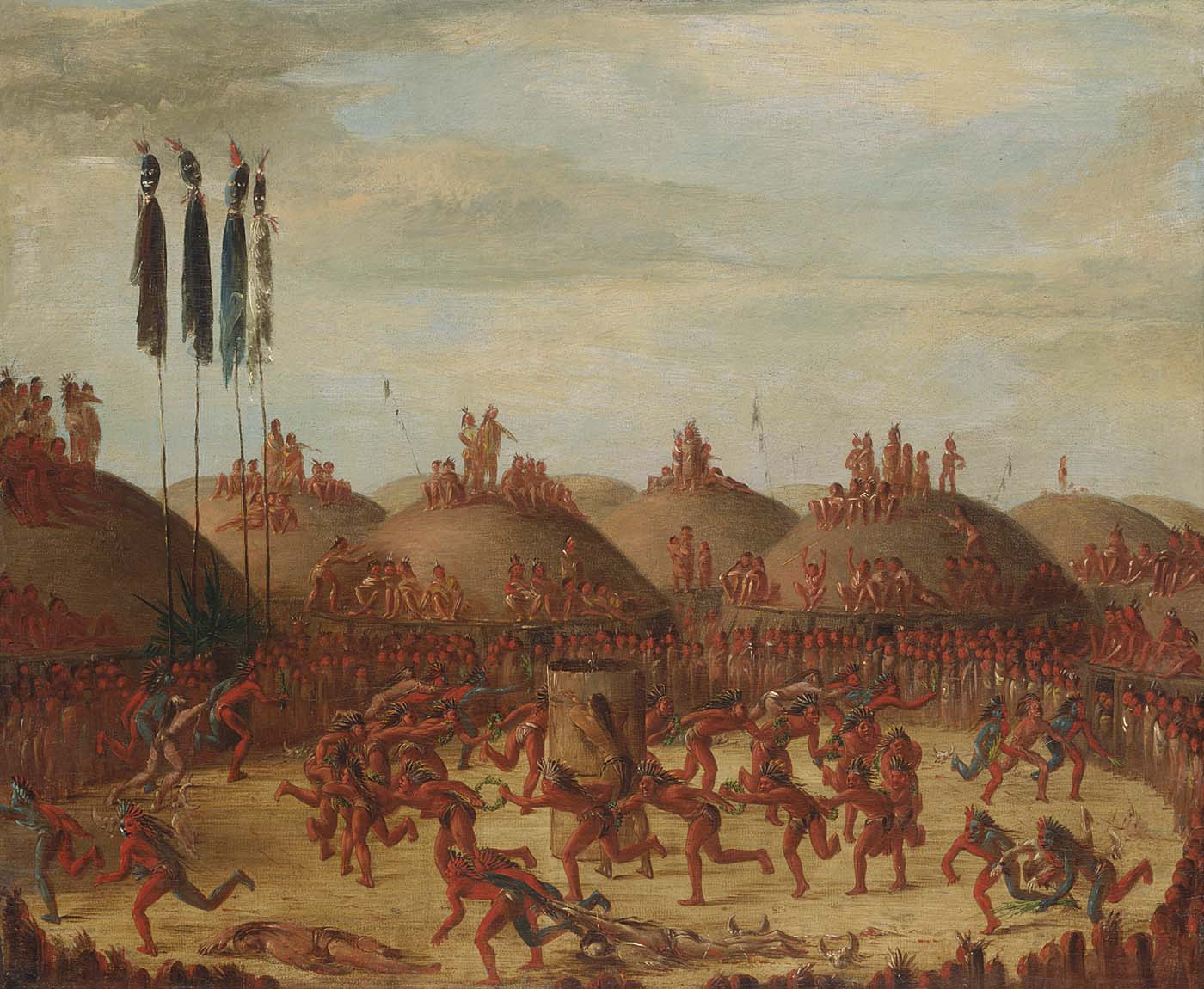The Last Race, Mandan O-kee-pa Ceremony

The O-kee-pa ceremony, which George Catlin witnessed on his travels along the Upper Missouri in 1832, was the centerpiece of the Mandan religious calendar. The annual enactment of the O-kee-pa was a four-day ritual that included the painful initiation of the most promising young men of the tribe. Catlin documented the ceremony in a series of paintings that were among the most important of his scenes of Native American rituals. The O-kee-pa began with the men sequestered inside a medicine lodge (see 1985.66.504), where the initiates underwent a four-day fast and feats of endurance that required them to be suspended from the roof of the lodge by chords anchored in their chests and shoulders. Outside the lodge, members of the Mandan tribe wearing buffalo robes performed the Bull Dance, to petition the Great Spirit for fertility and abundant bison (see 1985.66.505). The final part of the ceremony, shown here, was called the last race. The men were ushered out of the medicine lodge (“pale and ghastly from abstinence” as Catlin later wrote), and in one last test of their strength and courage, ran (or were dragged by the wrists) around the “Big Canoe,” shown here in the center of the circle. (Gurney and Heyman, eds., George Catlin and His Indian Gallery, 2002
- 624
- Other objects by this creator in this institution
- 312
- Objects by this creator in other institutions